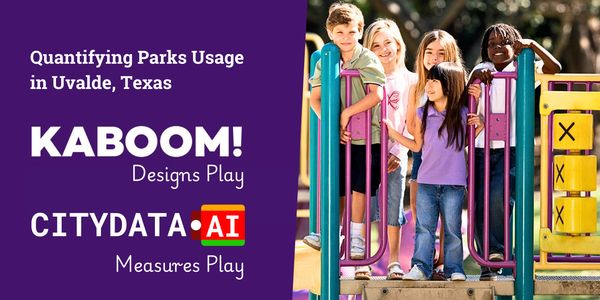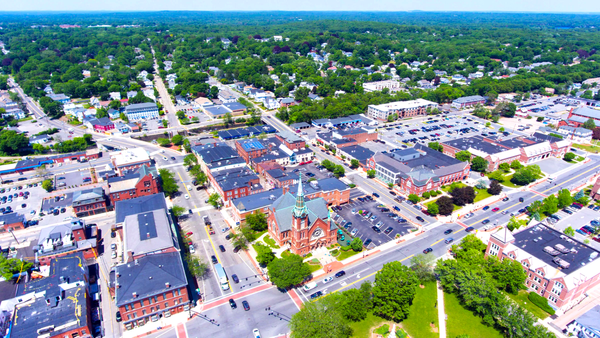How the U.S. Goes to Work

From the 1950s onward, the U.S. has been a nation of car commuters. Our country developed alongside the rise of the automobile and the present-day urban geography reflects the car's influence. With an average daily commute of 25.4 minutes, 85% of Americans still drive to work on a daily basis. The remaining 15% like to take public transportation, bike, walk, hoverboard, longboard, skate or work from home. So we know in general how people get to work, but where exactly do they come from and how far do they have to go each day?
Constellation of Congestion
To understand how the nation moves, we first focused on commutes of fewer than 100 miles. This rough-split effectively captured daily commutes within an urban zone while filtering out super-computers that need to fly to go to work.
Next, we mapped direct paths going from a commuter's home to a commuter's workplace. The result was a satellite view of the U.S. commute where each thin blue line of the graph represents 10 commuters.

While the lines do not follow exact roads taken, they demonstrate general trends very well. The lines illuminate a constellation of population density, economic activity, and commuter intensity.
The immediate visuals show a stark difference between the Eastern and Western halves of the country. The East is a dense, interconnected web contrasted by the sparse network of the West.
A closer look reveals some important features of commuter activity and urban geography. In fact, three distinct commute types become readily apparent with this view. Building off the work and metaphors of the urban planner Alasdair Rae, we refer to them as Galaxies, Supernovas, and Corridors.
Galaxies, Supernovas and Corridors
California and Texas offer great examples of each class of commute topography. What follows is a quick breakdown of the graph below.

Galaxies
Galaxies are mega-regions of commuters. They are places like the Bay Area, the Greater Los Angeles Area, and the New York City Metro. In galaxies, physical geography plays a large, visible role. The Bay Area exists because of the bay waters, and commuters flow primarily along the bay's coastline. In Los Angeles, the San Gabriel range combines with the coastline to create a very long region of commute. Aside from geography, the sheer size and commute density of these areas set them apart from normal urban centers as well.

Supernovas
Supernovas are also large, dense regions of commuters. However, their structure varies from the more evenly spread galaxy commuters. As the name implies, a commuter supernova has a clear epicenter and traffic density radiates outward from that central point. Boston, Houston, Dallas, and Fort Worth are great examples that exhibit this topology. In supernovas, geography still plays an important, though less visible role. The open, flat Texas plains, combined with the car's ubiquity, allow for extreme expansion from the city center into layers of suburbs. These metroplex regions are so large now that using a car has become the quickest means of commute.
Corridors
The corridor is the last major feature. A corridor can act as a mid-distance connector between galaxies/supernovas or exist as a distinct network feature. The Sacramento-Fresno-Bakersfield corridor is the connector for the Central Valley. It is largely tied together by agriculture and lies along I-5. A separate example of a clear corridor connects the Denver, Boulder and Colorado Springs. It is largely removed from other states by the Rockies and represents the core commute structure of Colorado.
Super-Commuters
In addition to the average commuter, there is another class of workers called super-commuters. They are the people who travel hundreds of miles to work - sometimes once a week, sometimes several times a week. Their paths do not fit neatly into the previous commuter area types. Instead, they warrant their own designation. The graph below shows how the U.S. is connected by these people, with trips over 100 miles each way shown in cyan. The Northeast is far and away the most popular destination, followed by the West Coast. On the flipside, Montana, North Dakota, South Dakota, and Wyoming stay true to their more insular nature. Very few people seem to either leave or enter their region.

The above analysis was made possible by CITYDATA's APIs and structured datasets for the US. CITYDATA's APIs make it easy to search and analyze demographic data, education, employment, households, housing, commute patterns, crime incidents, political preferences, hyperlocal events and activities, places, local businesses, and neighborhood profiles.




